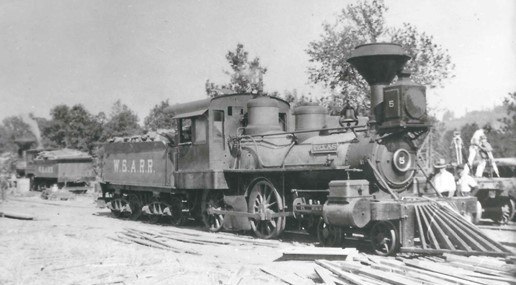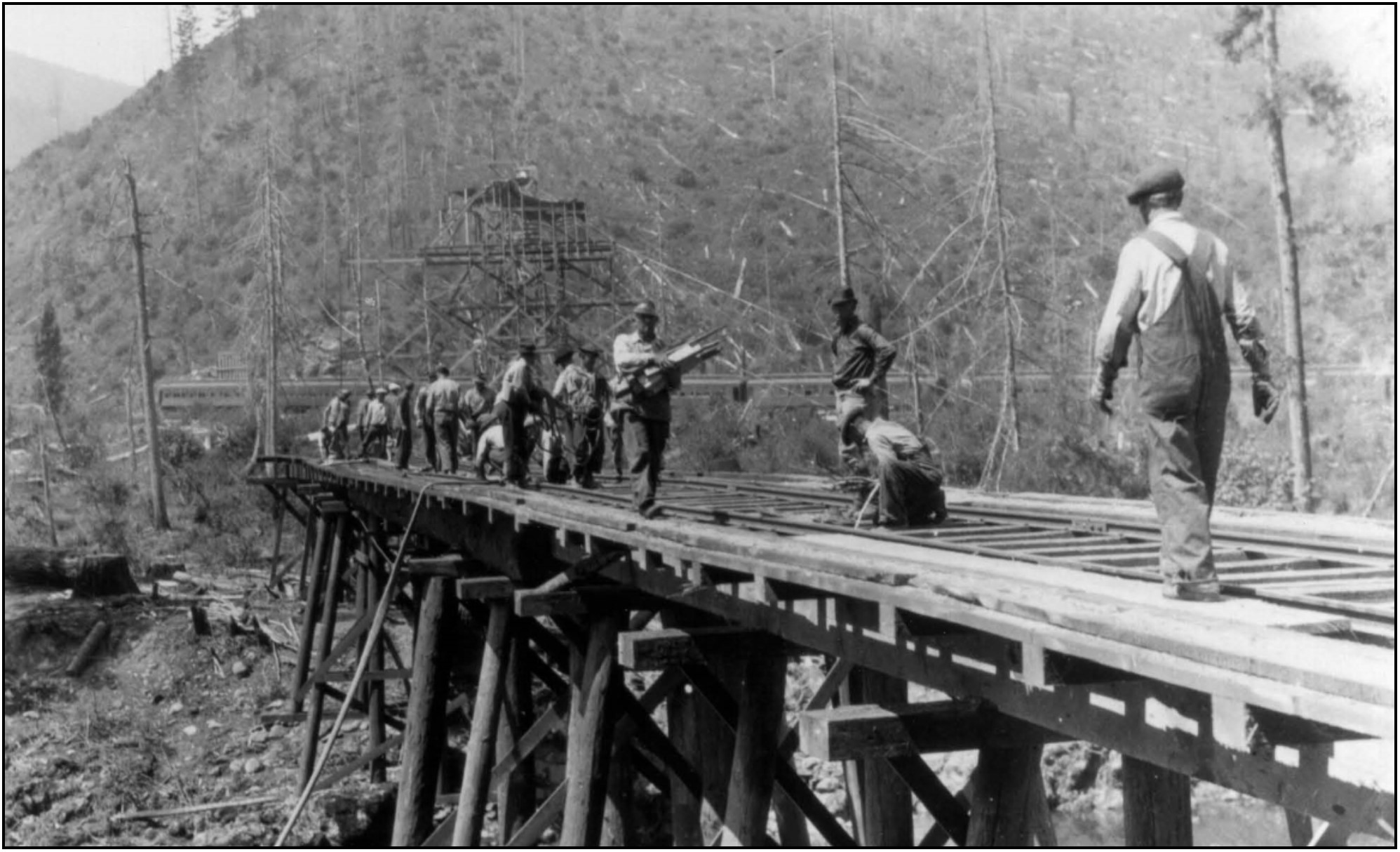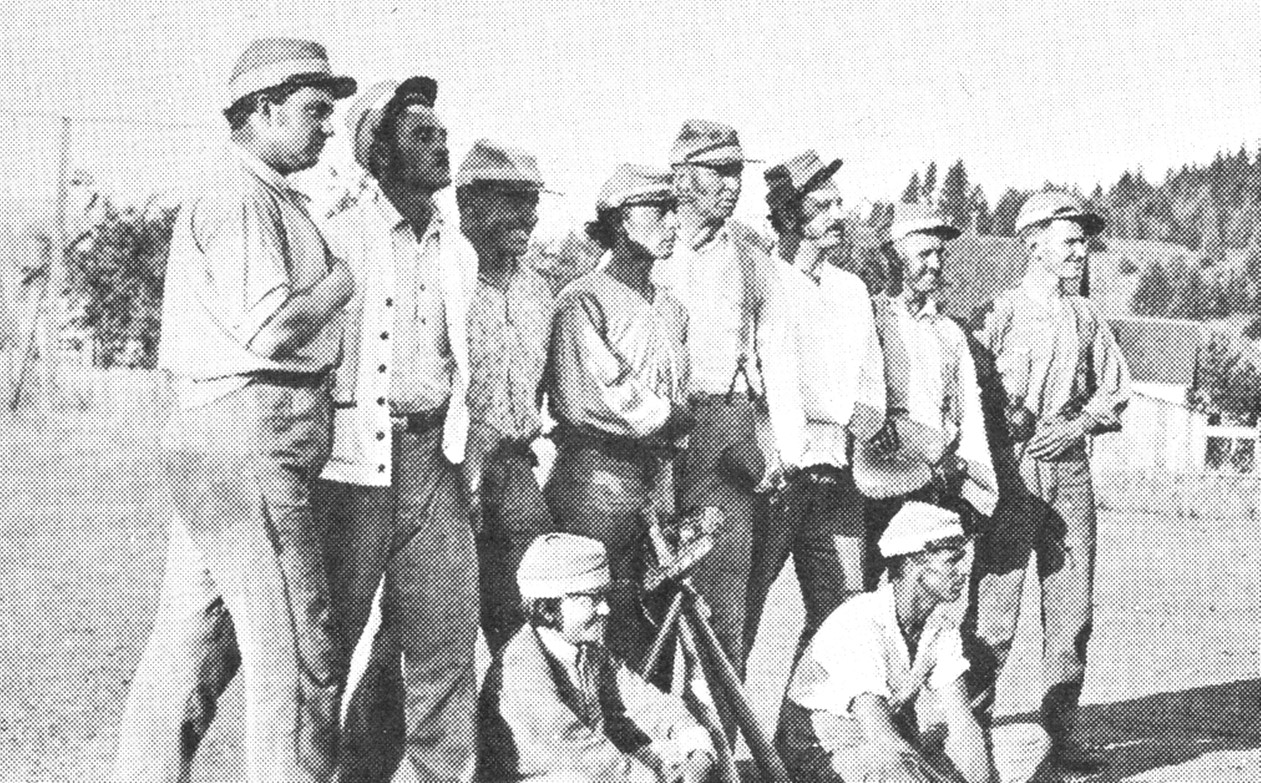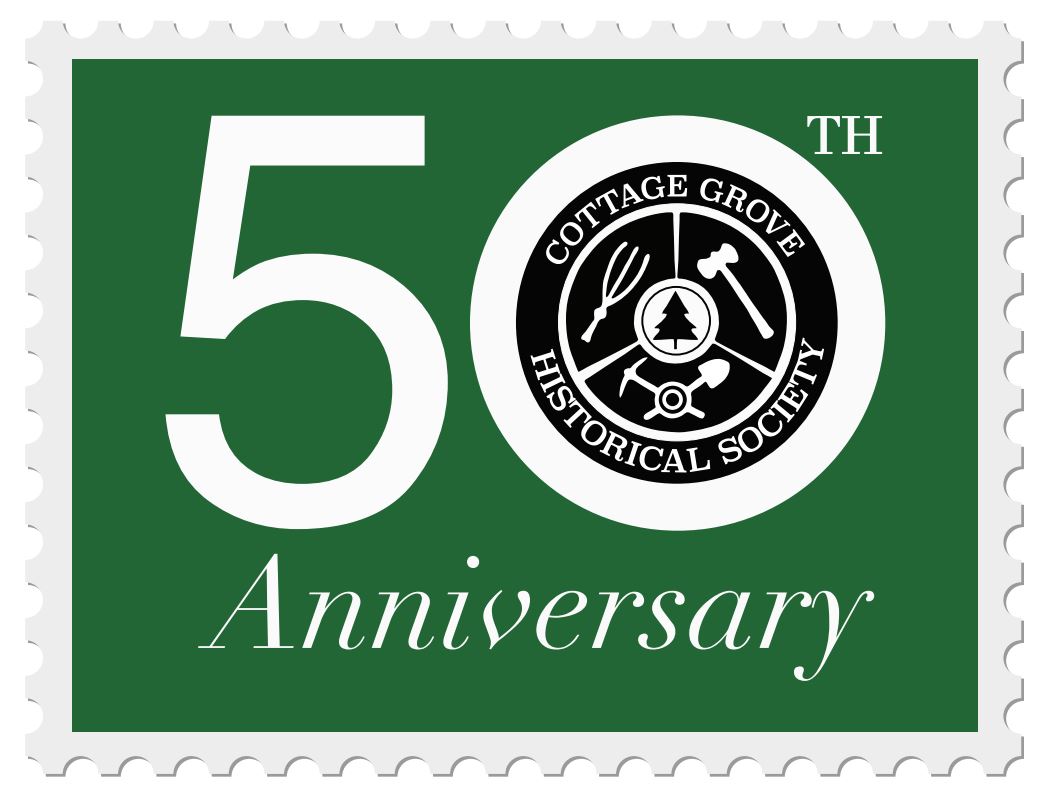The Story
 |
| While the General was the title engine, the Texas also played a key role in the film. Here you can see both engines and a film crew on a parallel track. |
The "General" was an actual southern locomotive of the 1850s and ‘60s. The movie is propelled forward when the Civil War came to Marietta, Georgia on April 12, 1862, when Union spy James J. Andrews and twenty-four of his men boarded “The General,” while the crew and passengers were stopped in Marietta for breakfast. “Andrews’ Raiders,” as they are known, took off in the engine and headed north, cutting telegraph lines and tearing up rail tracks along the way. The General is remembered for this battle. Keaton loved the idea of making the Andrews Raid into an action movie. Known as a comedian, Keaton was bent on making a Civil War dramatic movie as detail-oriented as possible -- “until it hurts”. But, along with his comedy relief, Keaton added two fictional characters - a hero...Johnnie, and a heroine...Annabelle Lee, to push the drama forward.
The Film and Oregon
Buster Keaton first went to Georgia to see the original General in a historic museum in Kennesaw, Georgia. He liked to work with stories of heroes. He believed all ordinary people are heroes when they attempt to do extraordinary things. He wanted to film in the actual locations of the Andrews Raid. But after exploring the region, he concluded the New South didn’t much resemble the Old South. Then when scouting in Oregon, he found what he was looking for. There were many lumber company railroads through what looked like Georgia and Tennessee. And many of the chase sequences could be shot on existing parallel tracks within the city limits of Cottage Grove, just north of Main between 14th and 18th streets. Other shots followed along Row River Road 16 miles up to Culp Creek. The rail owners were willing to cooperate with Keaton so that he could use the track all day; they simply moved their timber and lumber shipments to nighttime.
The film company arrived with wagons, uniforms, horses, and locomotives (acquired locally) in April, 1926 – they stayed 6 months. A complete movie set was built in the area of 14th and Main streets. Acting first as Marietta GA in the opening of the film, the false fronts were redressed as Chattanooga, TN for final scenes. The only shots filmed in a Hollywood studio are the indoor scenes...and the drenching rain scenes!

The train climax was filmed at Culp Creek, where Keaton built a trestle over the Row River. The crew left the Cottage Grove Hotel each morning and rode the train for an hour. Some scenes required about 60 extras. The extras were sometimes asked to repeat scenes and later in the day they changed uniforms and marched the other way! In 1926, and not understanding film production, it seemed particularly odd and memorable to these men. The extras were fed meals on location prepared by Keaton's own chef. They were reportedly paid at the end of each day by a man who held a huge roll of $5 bills in his hand and peeled them off one at a time to the people in line. Children were paid the same as adults, and at $5 a day (and a free lunch!), the extras made more than a millworker!
Many in town came to know Buster Keaton personally, as he was a delightful person, known to be a true friend to those who were lucky enough to have Buster get to know them. Buster visited with locals most evenings, went to shows at the Arcade Theatre, and liked to talk with locals about the town and the outdoors. His love of baseball is legendary. Using baseball as a time filler for a day where the sky wasn’t quite right for filming. Many times he set filming aside for hours, especially if the game was good! He was a comedian both on and off the screen. Old-timers remembered him “riding” down the hotel stairs on the back of his huge St. Bernard dog, and sliding down the railing, too.
Marion Mack, the woman who plays Annabelle, knew they had become friends when he followed her out to where she bicycled to go swimming, and tied her clothes in knots. Remember this is 1926 when bathing suits were just getting above the knee. She had to ride back into town in just the bathing suit -- something you just did not see or do!!
The story of the locomotive falling into the Row River could be told by many hundreds since nearly all of Cottage Grove and much of Lane County came out to watch this one-time only scene, from behind the cameras. The Row was dammed up downstream to raise the water level under and around the trestle. Except for a few deep holes, the water was not exceedingly deep. But some actors and horses starting into the water and found themselves in deep water – they were truly surprised and frightened. While not an ideal situation, the scene was just what Keaton wanted – very realistic looking. To ensure that the trestle collapsed on cue, Keaton had the crew cut into the structure and load it with small charges of dynamite just to make sure everything went as planned. He had over $40,000 committed to the scene and he had only one shot to get it! After the wreck, the locomotive rusted in the water for many years, and it was not until WWII, when metal was needed for the war effort, that crews salvage it for the metal.
A Little Film History
 Rather than try to be funny in every scene, Keaton tells his story as a drama, with comic relief throughout. He structures events in a methodical build-up, and you come to expect something funny coming throughout the movie. To do this he always played the hero - that ordinary person who sometimes has to do extraordinary things -- and he always had a heroine who was muddle-headed to make him look better, maybe even heroic. They had no script, just an outline of the story. They did one or two takes of most scenes. They enjoyed each other's rare wit and spontaneous ideas. Keaton required each crew member to be on top of their game. When he offered a stunt woman in a scene where Marion is gagged and stuffed in a bag, tripped over, and stepped on, but she insisted on doing the shots herself. She actually suffered minor injuries in that and other scenes, but she wanted to give her best to Buster. The General was largely panned by critics because the civil war was still a raw subject in 1926. The civil war was just not a laughing matter. In later years, The General is considered by film historians to be one of the most important films ever made.
Rather than try to be funny in every scene, Keaton tells his story as a drama, with comic relief throughout. He structures events in a methodical build-up, and you come to expect something funny coming throughout the movie. To do this he always played the hero - that ordinary person who sometimes has to do extraordinary things -- and he always had a heroine who was muddle-headed to make him look better, maybe even heroic. They had no script, just an outline of the story. They did one or two takes of most scenes. They enjoyed each other's rare wit and spontaneous ideas. Keaton required each crew member to be on top of their game. When he offered a stunt woman in a scene where Marion is gagged and stuffed in a bag, tripped over, and stepped on, but she insisted on doing the shots herself. She actually suffered minor injuries in that and other scenes, but she wanted to give her best to Buster. The General was largely panned by critics because the civil war was still a raw subject in 1926. The civil war was just not a laughing matter. In later years, The General is considered by film historians to be one of the most important films ever made.
